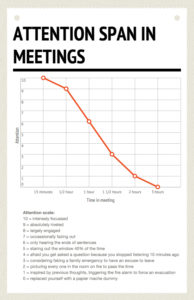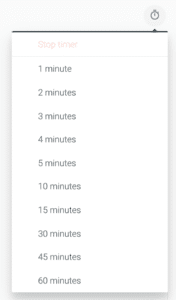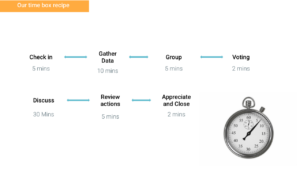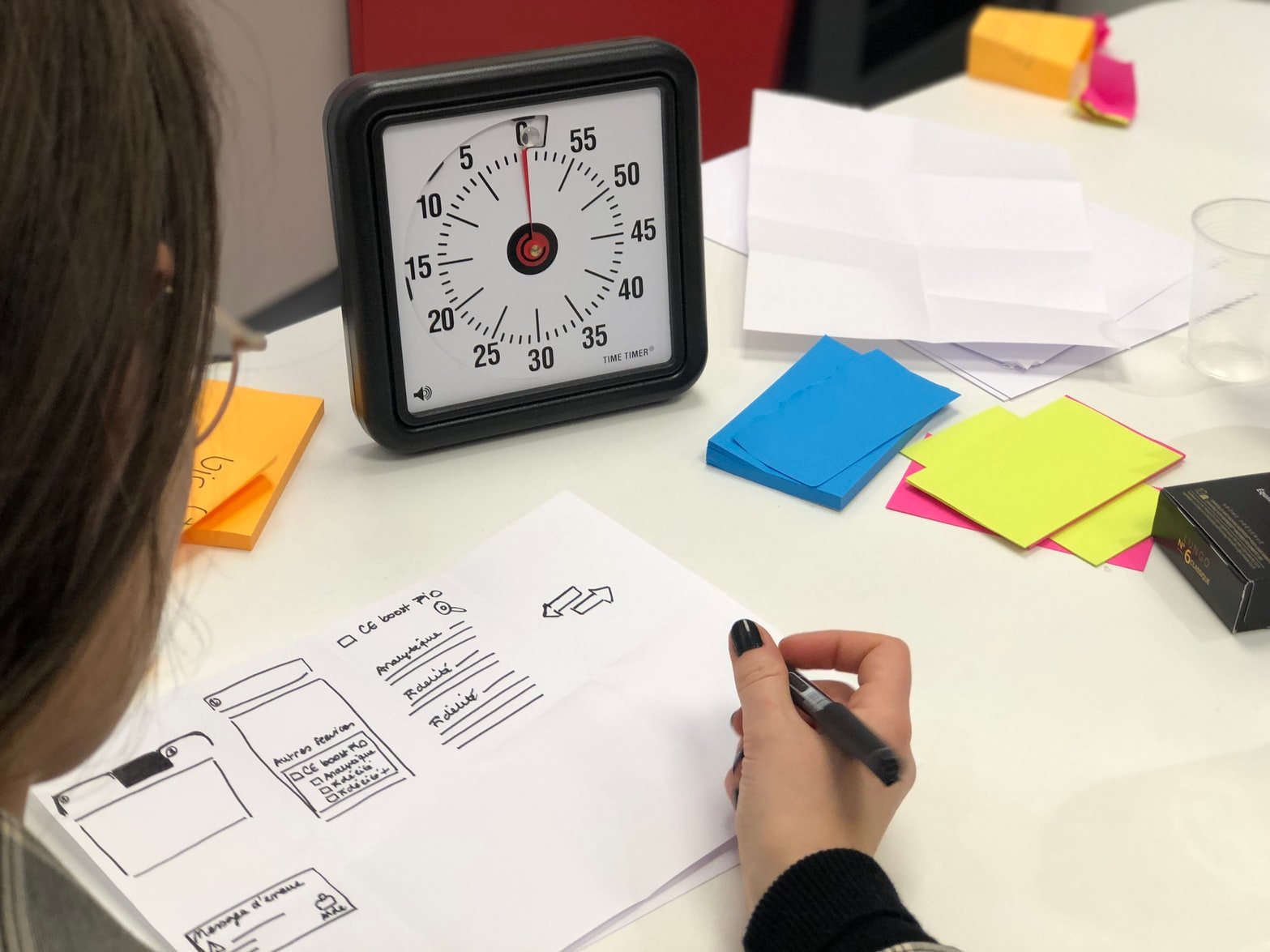We’ve all been in at least one meeting where we come out and say “well that was a waste of time.”
This graph summarises the truth about human attention span in meetings.

One way we can make sure teams and participants don’t leave meetings unhappy because it runs out of time and ineffective is to use the timeboxing methodology. Scrum teams have used timeboxing as a way to maintain efficiency and productivity, so let’s find out more!
What is timeboxing?
Timeboxing is a simple time management technique which involves setting a fixed, maximum unit of time to complete an activity. That unit of time is referred to as a timebox. You then work on the activity during the fixed time period and stop working on it once the time is up. Then, you assess whether you’ve reached your planned goals.
Timeboxing was first introduced by James Martin, the author of the book Rapid Application Development, as part of agile software development.
Scrum teams and many project managers use timeboxing to keep everyone focused on accomplishing the task at hand.
Let’s see how timeboxing is used by scrum teams
Sprint: timeboxing can be used to define the length of the Sprint for scrum teams to deliver the Sprint goals.
Sprint planning: when a team launches, they establish a timebox for the Sprint Planning meeting. The Scrum Guide suggests that a Sprint Planning meeting should be timeboxed at 8 hours of less for a one-month Sprint.
Daily scrum: a shorter timebox, for about 15 minutes for each day can help scrum teams synchronize activities and make any challenges to achieving the Sprint goal obvious.
Sprint review: during the review, sprint backlog items delivered during the sprint are discussed and inspected. You can timebox the review to make sure you go through the backlogs efficiently and effectively.
Sprint retrospectives: as you would know, retrospectives are our jam! Retrospectives are a time for the team to inspect itself and identify a process improvement that they can implement for a new sprint. Timeboxing retrospectives is important, to avoid BMWs, to make sure that every team member’s opinions are valued, and to keep discussions constructive.
Timeboxing with TeamRetro
If you want to keep things moving quickly and on time with your retrospectives, you can set a countdown timer in TeamRetro through the stopwatch in the top right-hand corner of your screen.


When your time is up the timer will go red and pulse to grab your attention.

Or people can click the button functionality to say “I am finished” signalling they are ready to move on. Other ways to do this if you are using Zoom is to click “yes” or “no.”
TeamRetro Timeboxing Recipe
TeamRetro has a Timeboxing recipe for synchronous meetings for a 60 – 1 minute retrospective (just to make sure you finish on time). Note, you can proportionate this recipe for a longer meeting to suit your team’s needs.
For example if your team health checks show that you need more connectivity, then you might need to allocate more time.
Check it out below.

More Timeboxing tips and tricks
- Allocate a specific time for each person in the team e.g. 1 minute per person
- Roman voting: thumbs up or down if they need more time at the end of the timer
- Think “pair share” – think for 30 seconds, pair with another person for 1 minute, and then share with another pair before final sharing with the whole group.
Try it for your next retrospective or meetings
Want to try the timeboxing methodology?
Try TeamRetro for free for 30 days and start using our meeting facilitation tool – the TIMER – to facilitate timeboxing easily for your next retrospectives or meetings.
